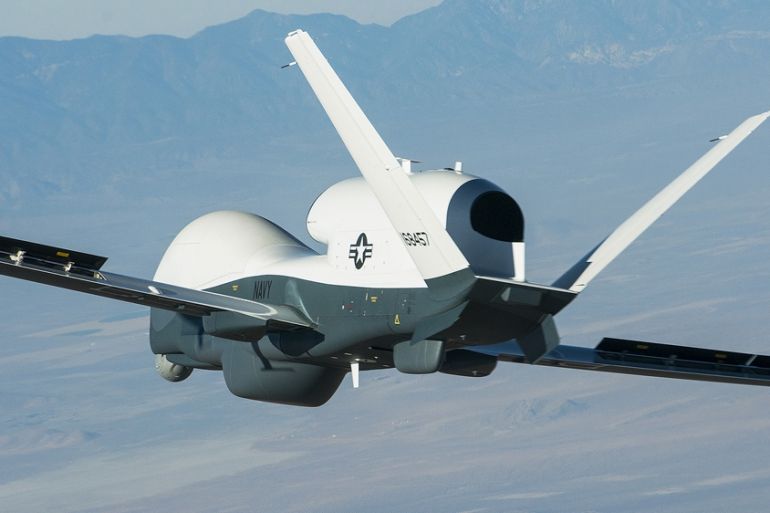Oil prices surge after Iran shoots down US drone
Thursday’s incident marks the first direct Iranian-claimed attack on US assets amid the escalating crisis.

Oil prices climbed around three percent on Thursday amid escalating tensions in the Middle East after a US military drone was shot down by Iranian forces.
The drone was brought down in international airspace over the Strait of Hormuz by an Iranian surface-to-air missile, a US official told the Reuters news agency on Thursday, speaking on condition of anonymity.
Keep reading
list of 4 itemsUS imposes new sanctions on Iran after attack on Israel
A flash flood and a quiet sale highlight India’s Sikkim’s hydro problems
Why is Germany maintaining economic ties with China?
Iran’s elite Revolutionary Guard force said the American aircraft was shot down after flying into Iranian airspace in the southern province of Hormozgan.
The different accounts couldn’t be immediately reconciled.
Tensions have been rising in the Middle East after last week’s attacks on two tankers near the Strait of Hormuz, a chokepoint for oil supplies.
Fears of a confrontation between Iran and the United States have mounted, with Washington blaming Tehran for the tanker attacks and Tehran denying any role.
Oil prices had risen earlier in the day supported by signs of improving demand in the US, an agreement between Organization of the Petroleum Exporting Countries (OPEC) and other producers on a date for a meeting to discuss output cuts and signs that the US and China were resuming talks to resolve a trade war that is threatening global growth.
“The geopolitical side is the wild card and can’t be predicted, not just the Iran concerns but also the trade meeting between” US President Donald Trump and Chinese President Xi Jinping, said Phin Ziebell, a senior economist at National Australia Bank.
Brent crude futures were up $1.93, or 3.1 percent, at $63.75 a barrel around 0650 GMT, after rising as high as $63.88.
US West Texas Intermediate (WTI) crude futures were up $1.73, or 3.2 percent, at $55.49 a barrel.
Crude stocks fall
After swelling to near two-year highs, US crude stocks fell by 3.1 million barrels last week, compared with analyst expectations for a draw of 1.1 million barrels, the Energy Information Administration (EIA) said on Wednesday.
Refined products also posted surprise drawdowns as petrol demand ticked higher on a weekly basis and surged 6.5 percent from a year earlier.
OPEC members agreed to meet on July 1, followed by a meeting with non-OPEC allies on July 2, after weeks of wrangling over dates.
OPEC and its allies will discuss whether to extend a deal on cutting 1.2 million barrels per day of production that runs out this month.
Momentum for an agreement appeared to be building as the United Arab Emirates’ energy minister told the Al-Bayan newspaper that an extension is “logical and reasonable”.
Expectations the US Federal Reserve could cut interest rates at its next meeting were also supporting oil prices.